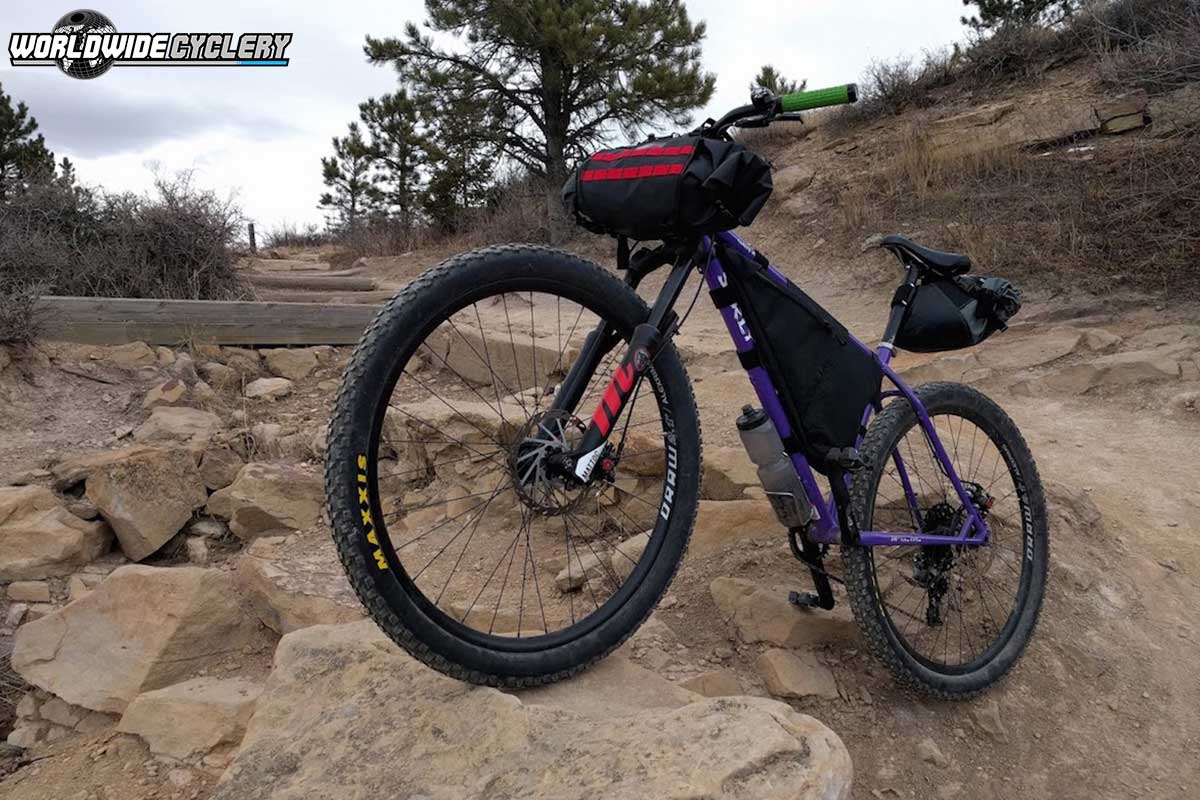- Shop
- Bikes / Frames
-
Components
- Tires / Tubes / Sealant / Valves
- Forks / Parts
- Rear Shocks / Parts
- Groupsets / Drivetrain Bundles
- Drivetrain
- Shifters
- Handlebars / Grips
- Stems
- Brakes / Pads / Adaptors
- Seatposts / Clamps / Levers
- Saddles / Seats
- Pedals / Cleats / Parts
- Wheels / Hubs / Rims
- Headsets / Parts
- Cables / Housing
-
Accessories
- Tools / Lube / Solvents
- Car / Truck Racks / Tailgate Pads
- Frame Straps
- Pumps / Inflation
- Chainstay / Frame Protectors / Fenders
- Computers / GPS / Electronics
- Hydration Packs / Bags
- Lights
- Water Bottles / Cages
- Gift Ideas / Novelties
- Indoor Trainers
- Bike Travel / Shipping Cases
- Nutritionals
- Locks
- Storage Racks / Stands
-
Apparel
- Helmets
- Jerseys
- Shorts / Bibs
- Gloves
- Shoes / Socks
- Pads / Protective Gear
- Pants
- Eyewear
- Chamois / Short Liners / Base Layer
- Chamois Creams / Embrocations / Butt'r
- Jackets / Vests / Hoodies / Flannels
- Casual Wear
- Headwear
- Brands
- Top Secret Sales (Do Not Tell!)
- Watch
- Read
- My Account
- Help / FAQ's
- Contact Us / Locations
- Call Us | 1-805-375-4525
- Why Shop With Us?
- About Us
- Continue Shopping
- Your Cart is Empty
Manitou Mattoc Comp 27.5+ Fork: Customer Review
Our customer Justin Crawford has set out to do more bikepacking in 2018, riding far out into the desert away from civilization. Justin went with the Manitou Mattoc Comp fork for its durability and seems to be happy with its performance so far. Check it out!

Overview
I've been riding suspension mountain bikes since 1993. Around that time, the first stock suspension forks showed up on Specialized hardtails, and I got one of those. I remember how exotic and luxurious that fork felt. On the Colorado Front Range, that fork opened up miles and miles of new terrain to me. It made rocky, technical trails much more fun. In those days, adjusting the fork meant changing the color of its elastomers. I still have a small blue tub of the original Judy Butter (a spring lubricant intended for RockShox Judy forks), which I keep around in case I ever have to overhaul a 30-yr-old fork.
Of course, it wouldn't be fair to compare that first fork to my new Manitou Mattoc Comp 27.5+. It didn't have any tuning options -- not a single dial or knob to twist. And if there's one thing I noticed when I unboxed the Mattoc, it was all the knobs and dials. This thing has a lot of options for tuning, and I must admit I was a bit intimidated by it all at first.

First Ride
I put my new Mattoc on a purple Karate Monkey 29er, which I have built as a bikepacking rig. I intend to take this thing way out into remote corners of the desert in 2018. I'll be climbing a lot and doing a lot of technical riding. I'll be far away from bike shops with a very limited set of tools, so I'll need my rig to fit well, perform well, and hold together. I chose all the bits and hung them on the bike myself because I want to be confident in case trailside repair is necessary. Also, I'm nearly a clydesdale on a bike, and I'll be hauling a bunch of gear, too, so my top criterion for everything on the bike is durability.
I don't like to spend my trail time twisting knobs and dials. Bikes are for riding and I like bike bits that I can set and forget. I cut the Mattoc's steerer tube, pressed on a crown race, put a few pumps of air in the spring, and took it out for an inaugural ride today on a local loop that boasts some beefy hits.

How Does it Compare?
I have one modern suspension fork to compare the Manitou to, a Fox Float Evolution that came stock on my StumpJumper FSR. The Mattoc was every bit as good in the choppy stuff as the Fox, and quite a bit stiffer (probably due to bigger stanchions and a stiffer axle). I never heard the discs singing in the turns, unlike the Fox. And while it seems like a small thing, the Mattoc's lockout dial is so much nicer to use because it indexes through its entire range of adjustment (the Fox has two or three clicks, it's hard to tell sometimes). It can be hard to identify all the things that make a fork feel good, but the Mattoc felt good.
Final Thoughts
What else can I say? Even though I haven't spent much time tuning the Mattoc, it was an excellent ride. I knew it was down there squishing, but I didn't have to think about it. I didn't stop to put more air in it or adjust its rebound speed or wonder whether it was perfect. Instead, I cranked up the hills, blasted down them, and grinned wide. I popped off some 18" drops and the fork didn't bottom out; I lifted over some big water bars and the fork didn't top out. The Mattoc did exactly what I need it to do this year: Keep quiet and eat the bumps.
--- Shop Info ---
Newsletter Signup -
© 2025 Worldwide Cyclery






